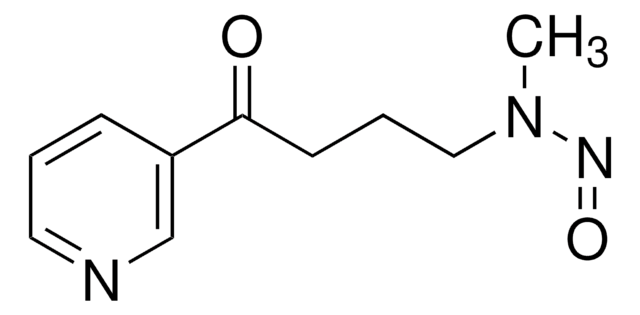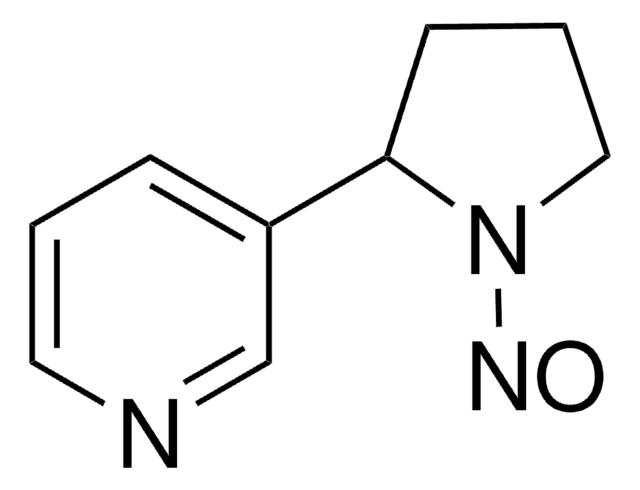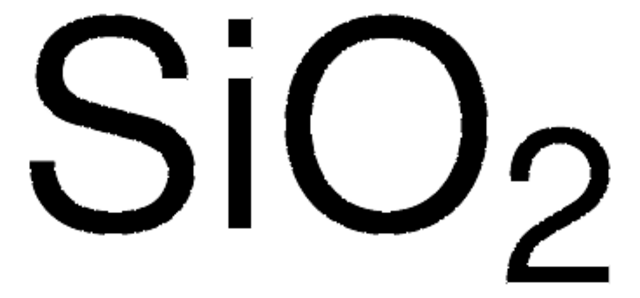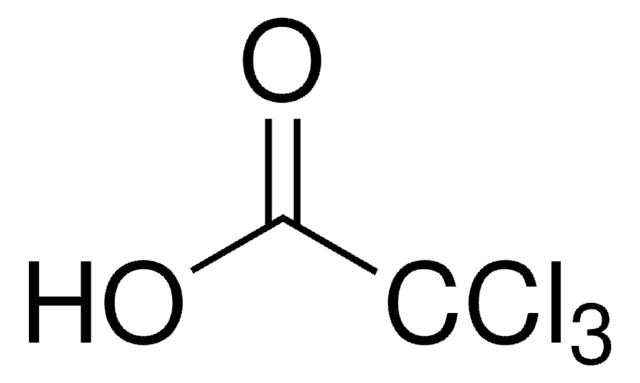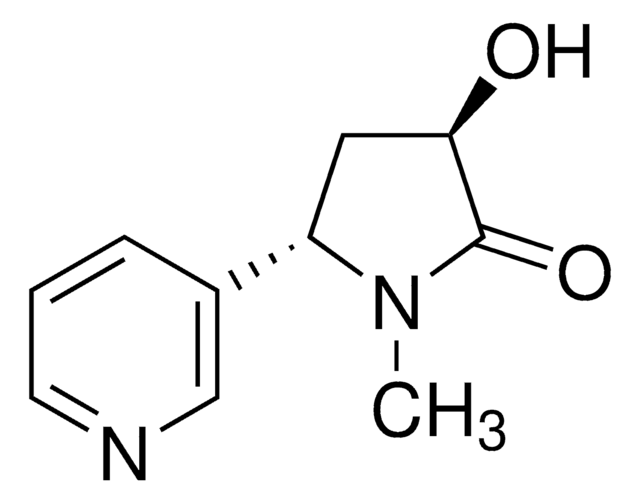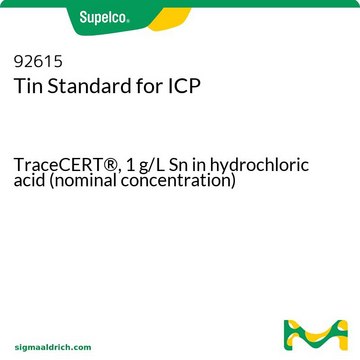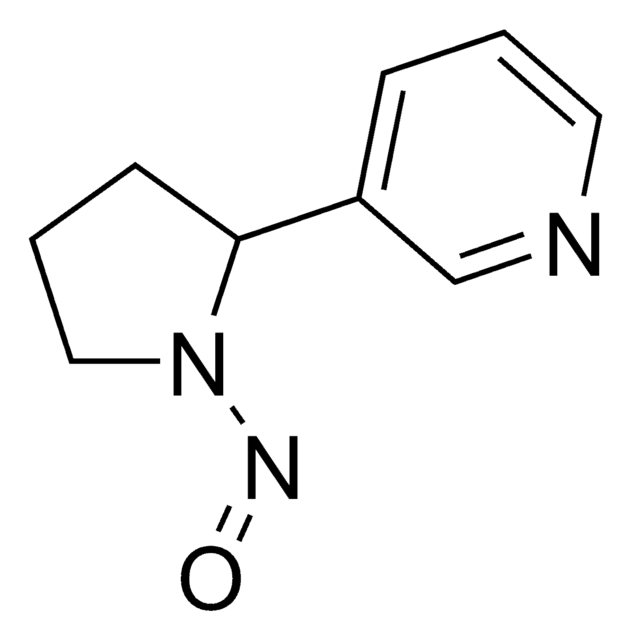所有图片(1)
About This Item
经验公式(希尔记法):
C10H15N3O2
CAS号:
分子量:
209.25
MDL编号:
UNSPSC代码:
41116107
PubChem化学物质编号:
NACRES:
NA.24
推荐产品
等级
analytical standard
质量水平
方案
≥92.0% (TLC)
保质期
limited shelf life, expiry date on the label
技术
HPLC: suitable
gas chromatography (GC): suitable
solid phase extraction (SPE): suitable
应用
cleaning products
cosmetics
food and beverages
personal care
包装形式
neat
储存温度
2-8°C
SMILES字符串
CN(N=O)CCCC(O)C1=CN=CC=C1
InChI
1S/C10H15N3O2/c1-13(12-15)7-3-5-10(14)9-4-2-6-11-8-9/h2,4,6,8,10,14H,3,5,7H2,1H3
InChI key
OGRXKBUCZFFSTL-UHFFFAOYSA-N
一般描述
4-(Methylnitrosamino)-1-(3-pyridyl)-1-butanol is one of the major metabolite of nitrosamine 4-(methylnitrosamino)-1-(3-pyridyl)-1-butanone, which is a carcinogen responsible in inducing lung cancer in smokers.
Standard for Supelco MIP SPE cartridges. For more information request Supelco Literature T407075, T706031
应用
Refer to the product′s Certificate of Analysis for more information on a suitable instrument technique. Contact Technical Service for further support.
储存分类代码
11 - Combustible Solids
WGK
WGK 3
闪点(°F)
Not applicable
闪点(°C)
Not applicable
个人防护装备
Eyeshields, Gloves, type N95 (US)
Yi Wang et al.
Cancer prevention research (Philadelphia, Pa.), 13(5), 483-492 (2020-02-28)
Tobacco smoking is the primary risk factor for lung cancer, driven by the addictive nature of nicotine and the indisputable carcinogenicity of 4-(methylnitrosamino)-1-(3-pyridyl)-1-butanone (NNK) as well as other compounds. The integration of lung cancer chemoprevention with smoking cessation is one
Sung Hoon Jeong et al.
Scientific reports, 11(1), 4536-4536 (2021-02-27)
Children are at risk of exposure to secondhand smoke. We aimed to evaluate the extent of their exposure to it in relation to their parents' smoking status by using biomarkers relevant to smoking. We evaluated 847 school-age children (6-12 years) who
Steven G Carmella et al.
Chemical research in toxicology, 15(4), 545-550 (2002-04-16)
4-(Methylnitrosamino)-1-(3-pyridyl)-1-butanone (NNK) is a tobacco-specific lung carcinogen which may play an important role as a cause of lung cancer in smokers. NNK is extensively metabolized to 4-(methylnitrosamino)-1-(3-pyridyl)-1-butanol (NNAL), which like NNK is a potent pulmonary carcinogen. NNAL in turn is
M E Staretz et al.
Carcinogenesis, 18(9), 1715-1722 (1997-11-05)
Phenethyl isothiocyanate (PEITC), a cruciferous vegetable component, inhibits lung tumor induction by the tobacco specific nitrosamine, 4-(methylnitrosamino)-1-(3-pyridyl)-1-butanone (NNK). To gain insight into the mechanism of PEITC lung tumor inhibition, we examined, in male F344 rats, the effects of dietary PEITC
Transport of the ?-O-Glucuronide Conjugate of the Tobacco-specific Carcinogen 4-(Methylnitrosamino)-1-(3-pyridyl)-1-butanol (NNAL) by the Multidrug Resistance Protein 1 (MRP1) REQUIREMENT FOR GLUTATHIONE OR A NON-SULFUR-CONTAINING ANALOG
Leslie.ME, et al.
The Journal of Biological Chemistry, 276(30), 27846-27854 (2001)
我们的科学家团队拥有各种研究领域经验,包括生命科学、材料科学、化学合成、色谱、分析及许多其他领域.
联系技术服务部门